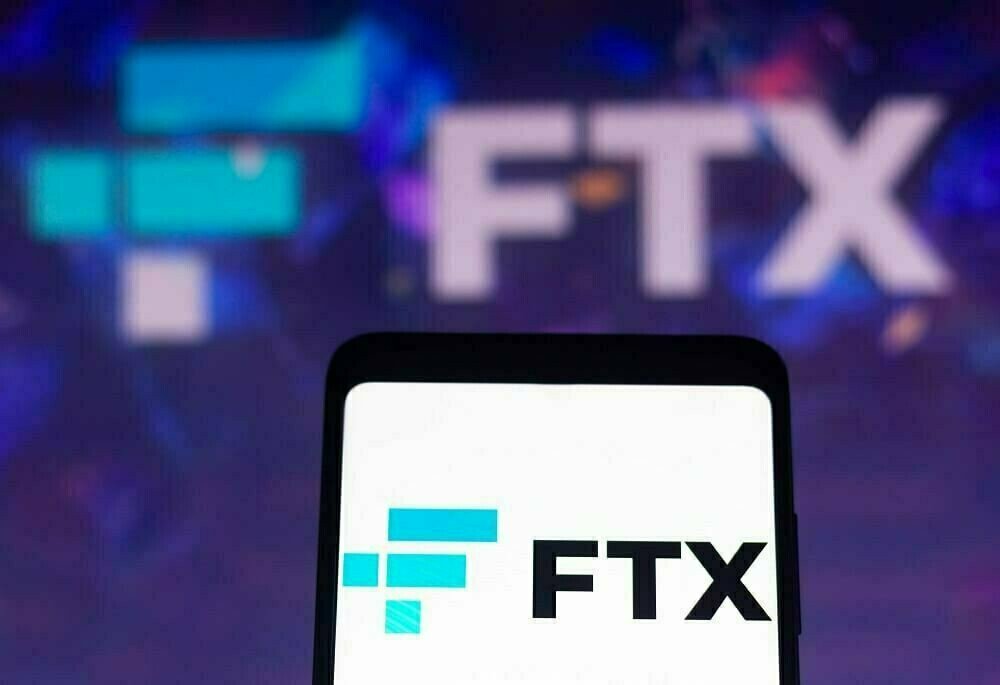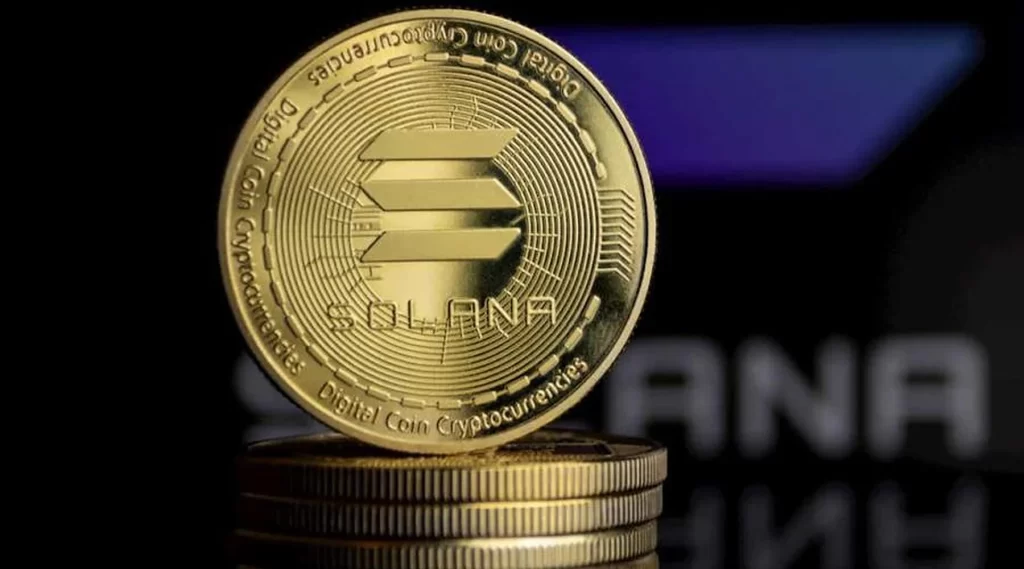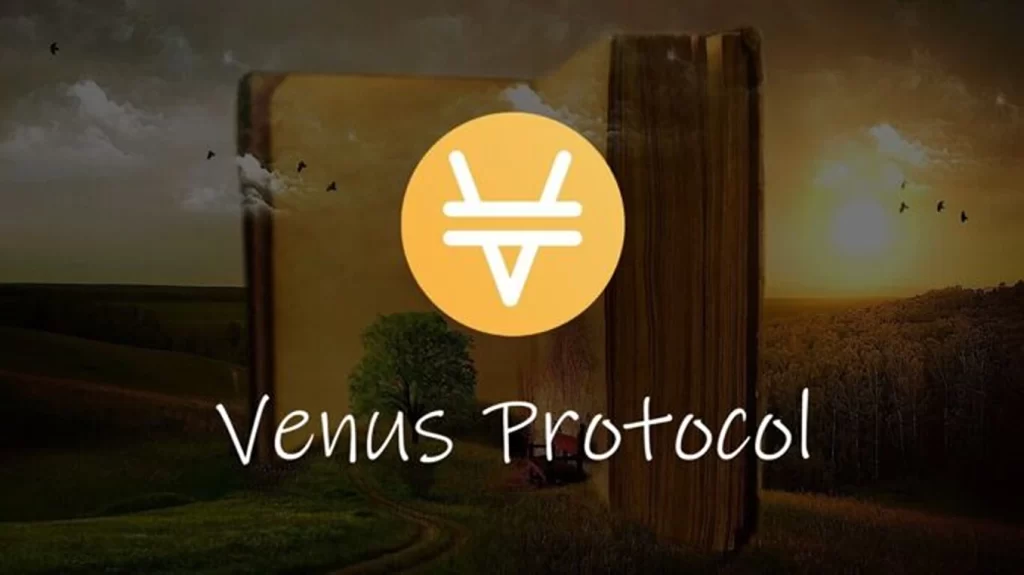Wylie Aronow, the NFT entrepreneur known as Gordon Goner, has reaffirmed his decision to stay away from Yuga Labs, the NFT company he co-founded, despite making progress with his health.
Addressing rumors of his potential return, Aronow stated on December 11 that he is not prepared to resume even part-time work, emphasizing the importance of ensuring his long-term well-being for those who depend on him.
He explained that his health journey is still marked by unpredictable fluctuations, making it a marathon-like endeavor.
Some days, Aronow feels ready to fully immerse himself in work, while on other days, he finds himself in need of emergency medical attention.
Aronow took a leave of absence in late January due to a congestive heart failure diagnosis. At the time, he also dismissed allegations of Yuga Labs using neo-Nazi and racist imagery as “lies” and pledged to continue serving as a board member and strategic advisor to the company.
Despite stepping back from day-to-day operations, Aronow has remained involved in overseeing Yuga Labs, which is responsible for NFT projects like Bored Ape Yacht Club (BAYC) and CryptoPunks.
He has identified key issues hindering the company’s progress and recently addressed them during a board meeting.
READ MORE: Lifinity DEX Suffers $699,090 Loss as Arbitrage Bot Exploits Unexpected Trade Response
While Aronow has confidence in the current leadership of Yuga Labs, he acknowledges the pressure the company faces in 2024 and believes they will rise to the occasion.
He expressed his support for the team, signaling his commitment to their success.
Reflecting on his past approach to work, Aronow admitted that he had pushed himself beyond his limits, working long hours nearly every day. He regrets not seeking a better work-life balance earlier, heeding the advice of those around him.
Yuga Labs underwent leadership changes during Aronow’s absence, appointing Daniel Alegre, former president and chief operating officer of Activision Blizzard, as CEO.
Aronow, along with Greg Solano, Zeshan Ali, and Kerem Atalay, co-founded Yuga Labs in February 2021.
The company is renowned for its NFT creations, including CryptoPunks, Bored Ape Yacht Club (BAYC), MeeBits, and Othersidemeta. As they head into 2024, Yuga Labs is gearing up for a critical year with a renewed focus on innovation and progress.
Avalanche (AVAX) has defied the recent downtrend in the cryptocurrency market, standing out with an impressive 79% weekly gain while other digital assets have struggled.
Analysts attribute this resilience to various factors, including notable partnership announcements, increased trading volumes, and a shift in how altcoins are perceived.
On December 11, while Bitcoin and Ethereum experienced a 6% decline, AVAX recorded a remarkable 13.6% gain within a 24-hour period, according to CoinGecko data.
One contributing factor to the excitement surrounding AVAX is its recent partnerships with financial giants JPMorgan and Citigroup through collaborations with the Avalanche Foundation.
These partnerships focus on real-world asset tokenization initiatives, sparking interest among investors.
Ryan Mcmillin, the Chief Investment Officer at Merkle Tree Capital, highlighted the surge in daily transactions for AVAX, which has grown from around $200,000 to $4.5 million in just a few days.
Additionally, daily active addresses have been on an upward trajectory, further bolstering AVAX’s appeal.
The Avalanche network’s Total Value Locked (TVL) has experienced an impressive 82% growth, soaring from $490 million to $894 million over the past three months since September 12.
READ MORE: VanEck Files Fifth Amended Application for ‘HODL’ Bitcoin ETF with SEC
Simultaneously, AVAX token trading volume has skyrocketed by an astonishing 2,436% during the same period, as indicated by DefiLlama data.
Henrik Andersson, Chief Investment Officer at Apollo Crypto, pointed out that AVAX had been undervalued by broader market standards until recently.
He highlighted AVAX’s TVL surpassing that of Solana, despite having only a quarter of Solana’s market capitalization.
However, while TVL remains higher, AVAX’s market capitalization is now only half that of Solana.
Andersson believes that in 2024, some altcoins may outperform Bitcoin, mentioning Immutable (IMX) and Synthetix as tokens that have already demonstrated such potential since 2022.
In a December 11 crypto fund flows report, CoinShares’ Head of Research, James Butterfill, noted that despite significant price declines in Bitcoin and Ethereum, Solana and Avalanche attracted substantial inflows of $3 million and $2 million, respectively.
This observation reaffirmed their status as “firm favorites” within the altcoin sector.
The United States Internal Revenue Service (IRS) is pursuing a $24 billion tax claim against the bankrupt crypto exchange, FTX, potentially derailing any hopes of a “meaningful recovery” for the exchange’s victims.
The IRS has been seeking to collect outstanding taxes from FTX and its sister company, Alameda Research, since May, initially claiming a staggering $44 billion across 45 separate claims.
However, in a recent filing with the U.S. Bankruptcy Court for the District of Delaware on December 10th, FTX vehemently contested the IRS’s claims, deeming them without merit and detrimental to the compensation meant for affected FTX users.
FTX argued that the IRS’s demands could effectively prevent most of its creditors, who are themselves victims of fraud, from receiving any substantial reimbursement.
FTX’s lawyers asserted that there was no factual basis for the IRS’s claims, as they far exceeded any income ever earned by the exchange.
The exchange contended that the $24 billion claim was not based on any reasonable estimate and had no legal validity.
Despite FTX’s protests, the IRS is still in the process of conducting its audit, which is expected to take another eight months, as indicated in the filing.
The impending legal battle over the legitimacy of the IRS’s claim is set to take place in court on December 12th.
In the meantime, FTX’s administrators have managed to recover approximately $7 billion in assets, including $3.4 billion in cryptocurrencies.
However, the former CEO of FTX, Sam Bankman-Fried, faced a significant setback in November when he was convicted on all seven fraud-related charges.
He is currently being held at the Brooklyn Metropolitan Detention Center, awaiting sentencing, which is scheduled for March 28, 2024.
As FTX grapples with the IRS’s substantial tax claim and its former CEO’s legal troubles, the fate of the exchange and its creditors hangs in the balance, with the upcoming court battle holding the key to determining the legitimacy of the IRS’s demands and the potential for meaningful recovery for FTX’s victims.
Bitcoin Core developer Luke Dashjr has refuted any involvement in the inclusion of Bitcoin inscriptions as a cybersecurity concern on the United States National Vulnerability Database’s (NVD) Common Vulnerabilities and Exposures (CVE) list.
This controversy arose when Dashjr, in a December 6th post on X (formerly Twitter), alleged that inscriptions, utilized by the Ordinals protocol and BRC-20 creators for embedding data in satoshis, were exploiting a Bitcoin Core vulnerability, thus “spamming the blockchain.”
Several days later, Bitcoin inscriptions surfaced on the U.S. vulnerability database as part of the CVE list on December 9th, describing it as a security flaw linked to the development of the Ordinals protocol in 2022.
Nonetheless, Dashjr, despite his vocal criticism of Bitcoin Ordinals, asserted that he played no role in adding inscriptions to the vulnerability database’s CVE list.
The CVE list is structured to allow any developer to report a vulnerability, subject to approval by the CVE Assignment Team for public awareness purposes.
As of December 11th, the NVD updated the listing, assigning inscriptions a base severity score of “5.3 Medium.”
This rating indicates that the exploitation of this vulnerability offers “very limited” access to a network or presents challenging hurdles for executing denial-of-service attacks, according to Atlassian, a software firm.
READ MORE: Defunct Crypto Firms FTX and Alameda Move $23.59 Million in Digital Assets to Top Exchanges
Dashjr explained that the CVE list’s 5.3 score primarily resulted from the vulnerability’s minimal impact on the availability of the Bitcoin network.
Nevertheless, he contended that the score might underestimate its long-term consequences, suggesting that if the availability impact were classified as “High,” the CVSS base score would reach 7.5.
The debate surrounding Bitcoin inscriptions continues to unfold on social media platforms.
While some Bitcoin enthusiasts argue that inscriptions are overloading the network, Ordinals proponents, including Udi Wertheimer, co-founder of Taproot Wizards, maintain that Ordinals are essential for the future adoption and revenue growth of the Bitcoin network.
The Bitcoin network has experienced increased congestion in recent months due to heightened interest in Ordinals’ nonfungible token inscriptions and BRC-20 token minting.
Data from mempool.space indicates over 275,000 unconfirmed transactions, with average medium-priority transaction costs surging from approximately $1.50 to around $14.
Patching the so-called inscriptions bug could potentially limit future Ordinals inscriptions on the network.
El Salvador’s eagerly awaited Bitcoin bonds, colloquially known as “Volcano Bonds,” have received regulatory approval and are slated for launch in early 2024.
The official announcement came via a statement from The National Bitcoin Office (ONBTC) on December 11.
The Digital Assets Commission of El Salvador has granted its endorsement for the Volcano Bond, marking a significant milestone in the country’s crypto journey.
Nayib Bukele, the pro-Bitcoin leader of El Salvador, also lent credibility to the news by sharing a post captioned, “Wen volcano bond,” along with multiple reposts confirming the bond’s issuance in the first quarter of 2024.
The concept of Volcano Bonds first emerged in November 2021 when El Salvador signaled its intent to explore this innovative financial instrument.
Subsequently, on January 11, the country passed groundbreaking legislation that established the legal framework for Bitcoin-backed bonds.
The primary objectives of the Volcano Bond are to address sovereign debt obligations and finance the development of “Bitcoin City,” an ambitious project aimed at embracing cryptocurrency technology.
READ MORE: VanEck Files Fifth Amended Application for ‘HODL’ Bitcoin ETF with SEC
The ONBTC disclosed that the bond issuance will take place on the Bitfinex Securities Platform, a trading platform dedicated to blockchain-based equities and bonds, registered within El Salvador.
This marks the inception of Bitcoin-based capital markets within the country.
Investors can anticipate a ten-year tenure for the bonds, offering an annual yield of 6.5%.
El Salvador has recently embarked on a substantial Bitcoin mining initiative valued at $1 billion, which harnesses the nation’s volcanic resources. Luxor Technology is a key partner in this venture, and the mining operations will be powered by the Conchagua volcano.
It is worth noting that the approval of the Volcano Bond comes nearly 21 months after the initial announcement by Alejandro Zelaya, the former finance minister of El Salvador, who had previously projected a mid-March 2022 launch date.
The regulatory green light signifies the government’s continued commitment to integrating cryptocurrencies into its financial infrastructure, showcasing the nation’s determination to be at the forefront of the crypto revolution.
Japanese financial services firm SBI Holdings and Saudi Arabian state-owned oil giant, Saudi Aramco, are contemplating a strategic collaboration in the realms of digital asset investment and semiconductor production projects.
Their intentions were formalized through the signing of a memorandum of understanding (MoU) on December 7th, with plans to establish SBI Middle East in Riyadh as the central hub for regional operations.
As per the MoU, SBI Holdings and Saudi Aramco will explore opportunities to join forces in the digital asset space, including potential co-investments in digital asset portfolios.
Additionally, the two entities may jointly identify Japanese digital asset startups that have the potential to expand their presence into Saudi Arabia.
Furthermore, they are considering launching semiconductor production ventures in both countries.
It’s worth noting that the scope of this partnership could expand further with mutual agreement between the two organizations.
Saudi Aramco, currently the world’s second-largest corporation by revenue, is looking to leverage these investments to enhance its supply chain capabilities.
While it’s worth noting that Saudi Arabia does not legally recognize cryptocurrencies, the government has exhibited a keen interest in Web3 technologies.
Notably, the MoU also highlighted SBI Holdings’ existing partnership with Taiwan-based Powerchip Semiconductor Manufacturing.
READ MORE: Defunct Crypto Firms FTX and Alameda Move $23.59 Million in Digital Assets to Top Exchanges
This move by SBI Holdings marks its latest effort to establish a significant presence in the Middle East.
In November, the company entered into a joint venture with the fintech investment arm of British bank Standard Chartered, SC Ventures, to create an investment company in the United Arab Emirates (UAE).
This initiative aims to invest in various aspects of market infrastructure, risk management, compliance tools, DeFi, tokenization, consumer payments, and the metaverse.
Prior to this, in September, SBI Holdings partnered with UAE-based TradeFinex to establish a joint venture in Japan, focused on localizing TradeFinex’s XDC Network enterprise blockchain.
Notably, SBI Holdings holds the distinction of being Ripple’s largest external shareholder and has been in partnership with the blockchain company since 2018.
Furthermore, in late November, SBI Holdings announced another MoU, this time with Circle, aimed at boosting the circulation of USD Coin and the proliferation of Web3 services in Japan, contingent on regulatory approvals.
Bonk (BONK), a quirky Solana-based memecoin with a canine twist, has vaulted to prominence, securing its spot as the third-largest memecoin by market capitalization.
This remarkable ascent occurred on December 8th, as Bonk’s meteoric rise outstripped the market cap of its fellow memecoin, Pepe.
Over the past month, Bonk has undergone a staggering price surge, accumulating an astonishing 370% growth rate.
This surge propelled its market capitalization to an impressive $762 million, in stark contrast to Pepe’s current market cap of $675 million, as per data from CoinGecko.
During this whirlwind 30-day period, BONK catapulted from a minuscule $0.0000028 to $0.000012. Traders fervently seized the opportunity to capitalize on the newfound enthusiasm surrounding the Solana ecosystem.
What’s particularly noteworthy is that Bonk’s rapid price surge outpaced even more established dog-themed memecoins like Shiba Inu and Dogecoin, which posted comparatively modest gains of 20% and 35%, respectively, in the same timeframe.
READ MORE: EU Reaches Landmark Agreement on Comprehensive AI Regulation
At the time of this report, Bonk has firmly entrenched itself as the third-largest memecoin, trailing only DOGE and SHIB, the leaders of the pack, with market caps of $6 billion and $14.4 billion, respectively.
Several factors underpin Bonk’s remarkable gains. Its listing on prominent centralized exchanges, including Binance and KuCoin, played a pivotal role in expanding its reach.
Moreover, futures data has shown a substantial increase in open interest over the past month, indicating significant trading activity in Bonk derivatives.
This heightened trading activity has contributed to the token’s price volatility.
Bonk initially debuted on December 29, 2022, and astoundingly witnessed a 3,766% surge within its first week of trading, despite the bearish conditions prevailing in the market.
Following this remarkable ascent, Bonk’s value gradually dwindled, with its price remaining near its all-time lows for nearly a year.
However, the tides began to turn on October 21, 2023, when Bonk exhibited signs of resurgence, experiencing a dramatic surge in value.
Since that pivotal date, Bonk has skyrocketed by a staggering 6,215%, solidifying its position as the most high-performing mid-cap memecoin in the past three months.
Google’s recent demonstration of its new artificial intelligence model, Gemini, has sparked controversy and accusations of deception.
The six-minute video, which gained widespread attention on YouTube with 2.1 million views since its release on December 7th, initially showcased Gemini interacting seamlessly with a human operator in apparent real-time, including tasks like analyzing a duck drawing, responding to hand gestures, and inventing a game called “Guess the Country” based on an image of the world map.
However, Google DeepMind executive Oriol Vinyals has since clarified that while the user inputs and outputs in the video were authentic, they had been edited for brevity.
In reality, Gemini’s interactions were text-based, not voice-based, and took significantly longer than depicted in the video.
Google had even included a disclaimer on the YouTube video, acknowledging that latency had been reduced and Gemini’s outputs shortened for the demonstration.
Despite these clarifications, Google faced severe backlash on social media, with some accusing the tech giant of lying and manipulating the demonstration to exaggerate Gemini’s capabilities.
READ MORE: Taiwan’s Central Bank Explores Wholesale CBDC as Part of ‘Banking 4.0’ Vision
Even some Google employees expressed dissatisfaction with the video, asserting that it painted an unrealistic picture of Gemini and highlighted how easily AI tools could appear more advanced than they truly are.
While one Google employee argued that some degree of marketing is necessary to promote such products, another defended the video by stating that individual words in Gemini’s responses were not altered, and the voiceover accurately represented excerpts from the actual text prompts used during the demonstration.
Upon its release, the Gemini “hands-on” tech demo had initially received praise from observers who marveled at its apparent human-like interactions and abilities.
Google positioned Gemini as a competitor to OpenAI’s ChatGPT, claiming it outperformed leading AI models in 30 out of 32 benchmarks assessing reasoning, mathematics, language, and other metrics, even surpassing GPT-4 in seven out of eight of these benchmarks.
In summary, Google’s Gemini AI demonstration, initially celebrated for its impressive capabilities, has come under scrutiny due to allegations of deceptive editing and misrepresentation of the AI model’s true performance.
The controversy highlights the challenges and ethical considerations surrounding the presentation of AI technology to the public.
Venus, a decentralized finance (DeFi) protocol, acknowledged that it faced an issue with one of its price feed oracles on December 11th, resulting in borrowings amounting to approximately $270,000.
Despite being described as an exploit by some analysts, the platform downplayed the incident and committed to replacing the funds from its treasury.
Reports emerged on December 10th, indicating that a malfunctioning price oracle had affected the decentralized lending and borrowing marketplace based on the Binance Smart Chain.
A Twitter user, SaulCapital, informed followers of an issue with the “isolated pool on Venus Protocol for liquid staked BNB,” and shared a link to a wallet address associated with the incident, which held just under $260,000 at the time.
In response to these reports, Venus Protocol’s ambassador, NoOneVII, suggested that it was more of an “Oracle price issue” occurring in a small isolated market.
He reassured users that the Venus Core Pool and other pools were separate and unaffected by this problem, emphasizing that there was no security breach.
Brad, the Head of Venus Labs, confirmed that the Binance oracle had reported incorrect prices, resulting in approximately $200,000 in borrowings.
READ MORE: Best Crypto-Focussed PR Agency – Prices and Review
Venus Protocol assured its community that the “$snBNB price feed is back to normal, Core Pool, and other markets are unaffected, and funds are SAFU (Secure Asset Fund for Users).”
Furthermore, Venus Protocol announced that the community would propose an immediate injection of liquidity from the treasury into the affected pool, totaling around $274,000.
This move would support the recovery of funds from the pool, with the assistance of partners.
Despite the incident, the total value locked in the DeFi protocol, launched in 2020, remained unaffected and stood at $738 million at the time.
The platform’s native token, Venus (XVS), experienced a 17.5% decrease in value over the past 24 hours, trading at $9.56, although this decline was partly attributed to the broader cryptocurrency market sell-off.
In conclusion, Venus Protocol faced a price oracle issue resulting in borrowings of $270,000, but it assured users of the security of its other pools and pledged to replace the funds from its treasury.
The incident did not significantly impact the total value locked in the protocol, and the token’s price decline was in line with market trends.
Google, the tech giant, is set to revise its cryptocurrency-related advertising policy to include advertisements for cryptocurrency trusts, starting from the end of January 2024.
This change coincides with the anticipated approval of spot Bitcoin exchange-traded funds (ETFs) in the United States in the same month.
In a policy update dated December 6, Google announced that its advertising policy for cryptocurrencies and related products would be adjusted on January 29, 2024, to permit advertisements from “advertisers offering Cryptocurrency Coin Trust targeting the United States.”
Cryptocurrency coin trusts were mentioned as examples of financial products that enable investors to trade shares in trusts holding substantial amounts of digital currency, which likely encompasses ETFs.
Google emphasized that advertisers must comply with local laws in the regions they target with their ads. This policy will apply universally to all accounts advertising these products.
READ MORE: Krist Novoselic Urges Microsoft to Reevaluate Generative AI Approach in Shareholder Proposal
Prospective advertisers for cryptocurrency trusts will need to be Google-certified, which involves obtaining the necessary licenses from local authorities and ensuring that their products, landing pages, and ads adhere to the legal requirements of the respective countries or regions where they seek certification.
While Google already allows advertising for certain cryptocurrency and related products, it continues to prohibit ads for cryptocurrency or nonfungible token (NFT)-based gambling platforms, initial coin offerings (ICOs), decentralized finance protocols, and services offering trading signals.
This policy shift aligns with Bloomberg’s ETF analysts’ prediction of a 90% likelihood of the approval of a U.S. spot Bitcoin ETF by January 10, 2024, with the potential for several pending applications to be approved simultaneously.
Currently, there are 13 Bitcoin ETF applicants, and detailed information about their approval processes remains limited.
Numerous fund managers, including BlackRock, Grayscale, and Fidelity, have reportedly engaged with the U.S. Securities and Exchange Commission (SEC) to discuss crucial technical aspects of their ETF proposals.
The cryptocurrency market is optimistic about these approvals, as evidenced by Bitcoin’s nearly 74% price increase in the past 90 days. Some analysts even anticipate a new all-time high for Bitcoin in 2024.













